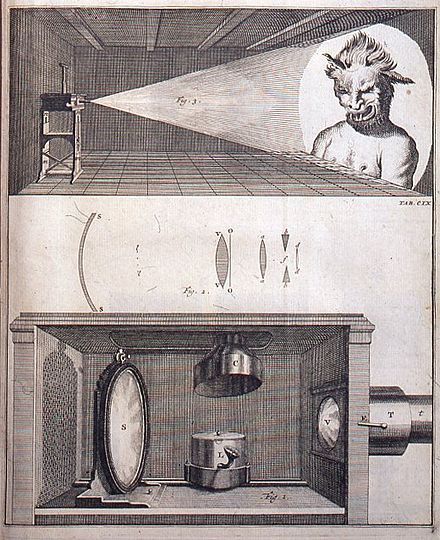Magic lantern was the first image projector created, and is one of the back bones of animation. Magic lantern was invented in the 1600’s by Christiaan Huygens, who was a dutch scientist. The lanterns were initially illuminated by candles to project images but later on as technology progressed they were lit by better sources of light.
In order to get the magic lantern to work and produce the images you needed various equipment. those equipment being:
- A source of light
- The object or item you wish to project
- A device to form the image your trying to project
- a screen where you need the light to be projected on
The magic lantern used a concave mirror in back of a light source to direct as much of the light as possible through a small rectangular sheet of glass—a “lantern slide”—on which was the image to be projected, and onward into a lens at the front of the apparatus. The lens was adjusted to optimally focus the plane of the slide at the distance of the projection screen, which could be simply a white wall, and it therefore formed an enlarged image of the slide on the screen.[1]Some lanterns, including those of Christiaan Huygens and Jan van Musschenbroek, used 3 lenses.
Originally the pictures were hand painted on glass slides. Initially figures were rendered with black paint but soon transparent colors were also used. Sometimes the painting was done on oiled paper. Usually black paint was used as a background to block superfluous light, so the figures could be projected without distracting borders or frames. Many slides were finished with a layer of transparent lacquer, but in a later period cover glasses were also used to protect the painted layer.[2] Most hand-made slides were mounted in wood frames with a round or square opening for the picture.[3
